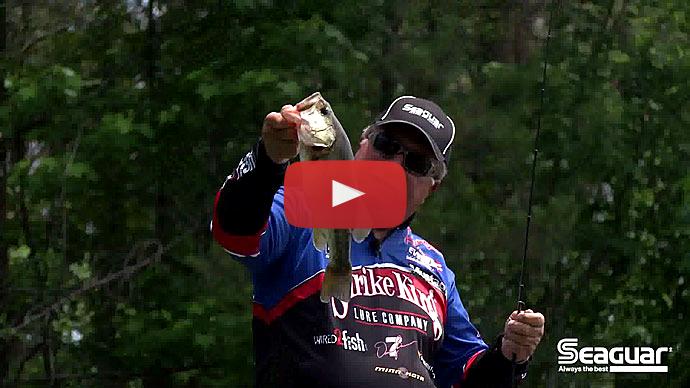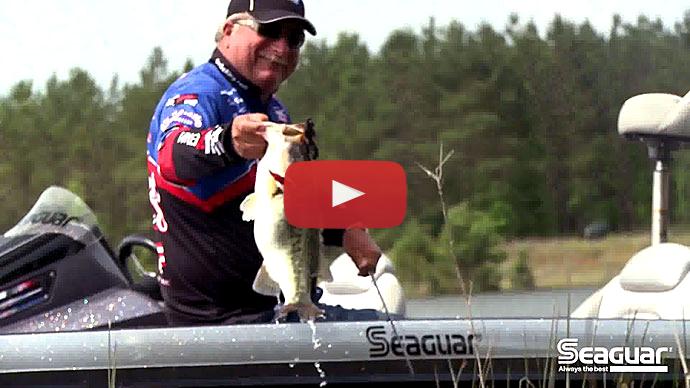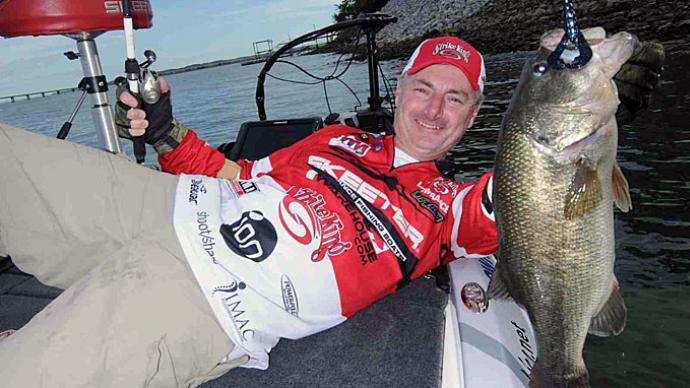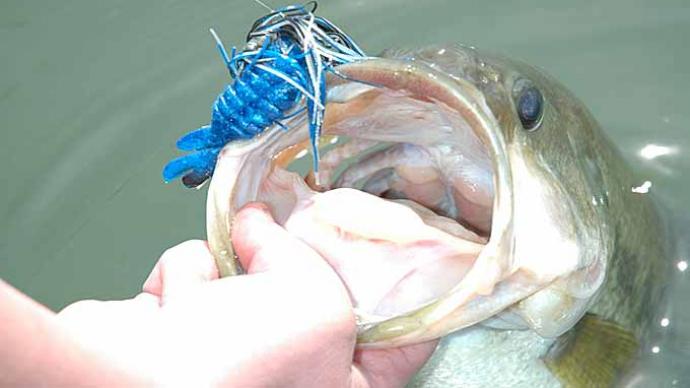Hey, guys. Dave with "The Fishing Pastor" here for KastKing and BassResource.com, and today we're gonna be talking about pitching for bass.
So, normally, you hear people talking about flipping and pitching. Today, I'm really just gonna be focusing on the pitching side of that. Now, pitching is a technique that I believe everyone should know in order to be a successful bass angler. Learning how to pitch in bass fishing has so many benefits to it. One of the greatest benefits, I'd say, is being able to make a stealthy, quiet cast to a specific target. Now, also, if you're a bank fisherman like I mostly am, sometimes you find yourself in some really tight spots where you just cannot make a cast. This is where pitching really comes in handy to make those targeted casts underneath a lot of trees, things like that. It's just gonna really help you get on more bass.
Also, if you're on a boat or a kayak and you're trying to cover some water, it's easy to really pitch out there and bring back your lure and cover a lot of water in a short amount of time with short distances. It also helps you, again, be stealthy and quiet, so you're not scaring off fish with loud casts. So, we're going to talk about the technique of pitching, and we're also going to talk about the gear that is best suited for this technique.
So, when it comes to pitching itself, basically what you're doing is you're using the momentum of your lure as it falls and your wrist to make that cast. Now, it's this kind of wonderful cooperation between the lure, between your wrist and your thumb, as you feather. Now, like I said, it's really Important that you feather with your thumb, because if you let it go and you raise your rod tip and you don't release with your thumb, you're gonna hold that line and it's just gonna plop back down, and that's not gonna work.
So, you're determining with your thumb how much line is coming out, how quickly it comes out or how slowly it comes out, and that's gonna help determine whether that lure is gonna fall softly and quietly in the water as well. So, pretty much what it is is you're letting the lure fall. And if you do hold the lure, if you decide to start off your pitches this way, which you can, and this the way I like to do it, you can hold it higher or lower. I've seen people do it different ways, and as you practice, as you do it, you're gonna find, kind of, what works for you. But I notice that if it's higher, usually, then, it tends to, like I said, lob a little bit. So, I'd recommend holding a little bit lower, a little bit, kind of, closer to your reel, not right on the reel, not super close but a little bit closer. But, again, you find what's comfortable for you. And then, like I said, everyone has their own techniques, their own styles. I actually like to turn the reel towards me, and so it's kind of a sideways... And then again, I'm feathering the entire time.
Now, some other things that are really important to know when pitching is you're using your wrist, like I said, getting comfortable using your wrist with your rod and reel. But just practicing even just that is really important. And just one thing that I've done and I still do is I like to actually like to practice pitching at home. And I'll just tie on a weight or something. You know, I don't want any hooks or anything going around my house or in my yard or wherever. But just tying on a weight and then just practicing, and practicing different strengths, and then also practice targeting. You know, you put a cup or some type of target, whatever you want, and then you practice the accuracy of your casting.
Let's talk about the gear that I would recommend for pitching. So, starting off with the rod, I'd recommend anything from a medium heavy and up. So, medium heavy, heavy, extra heavy, and that really depends on, kind of, where you're throwing your lures, the type of cover you have, and you know that based off of where you fish. Now my go-to rod for pitching is my KastKing Royale Legend rod. Now, this is a heavy, fast-action rod. It's a 7-foot-3, and I'd recommend something a little bit longer. I know some guys like to go 7-foot-11 and 8-foot and things like that. I'm a little bit on the shorter side, so I don't like super long rods, so 7-foot-3, 7-foot-4 works for me. And, again, a fast-action rod, so that really means that it has more tip more than anything else. The bend is more at the end of the rod, and that tip has a lot of sensitivity so, if I'm fishing, say, a jig or I'm fishing a Texas rig, I really want to have that sensitivity on there.
So a fast-action rod is, kind of, the best thing for me that I've seen. Moderate-action rods are better for cranking, things like that. You want more of that more parabolic bend. But when it comes to pitching, you want that good, fast tip. And again, a sort of longer rod and anything medium heavy and above.
Now, when it comes to the reel, I'd really highly recommend a faster reel. You don't want to have to find yourself, as you're pitching, having to make more turns on that reel to try to catch up to the fish. What you want is to be able to quickly reel down and then set that hook on the fish. So, what I'm using is my KastKing Speed Demon. Now, this is an incredibly fast reel, but I'd recommend anything with a seven gear ratio and above for pitching. I really wouldn't go any lower than that. Otherwise, you'll find yourself trying to catch up to that fish. But, this is a 9.3-to-1 gear ratio reel, so I don't have to turn this handle very many times to catch up to that fish. So, I'd really recommend going with a faster reel and something with a lot of power, like this Speed Demon.
So, the last piece of gear that I'd recommend when it comes to pitching is using either a no-stretch or low-stretch line. Most of my reels have braided line, and that's really what I'd recommend, especially if you're pitching into some heavier stuff. It just cuts through that easier, and they're low-diameter lines, so you don't really have to worry about them being super thick or super heavy. But, even if they are a heavier pound test, this is 65-pound braid right? This is a heavy line, but it has a small diameter. And if I don't need this, if I don't need all the power of this line, then I can just tie on a leader. So, today I actually have a 17-pound fluorocarbon leader tied on because I don't need all the power of a 65-pound braid. But, it is more sensitive and, again, it does have either no-stretch or low-stretch, so you're able to set that hook on the fish even harder.
I really hope that this tutorial helps you. Just remember just to practice your technique, and the more you practice, the better you'll get at it. And once you actually get out on the water, then you're more comfortable with it, and you'll find yourself hooking up on more bass. Thanks for watching. If you're interested in any of the gear that was mentioned in this video, it will be linked in the description below. Remember to subscribe to the channel and, as always, to pray, fish, repeat. God bless. I'll see you in my next video.






